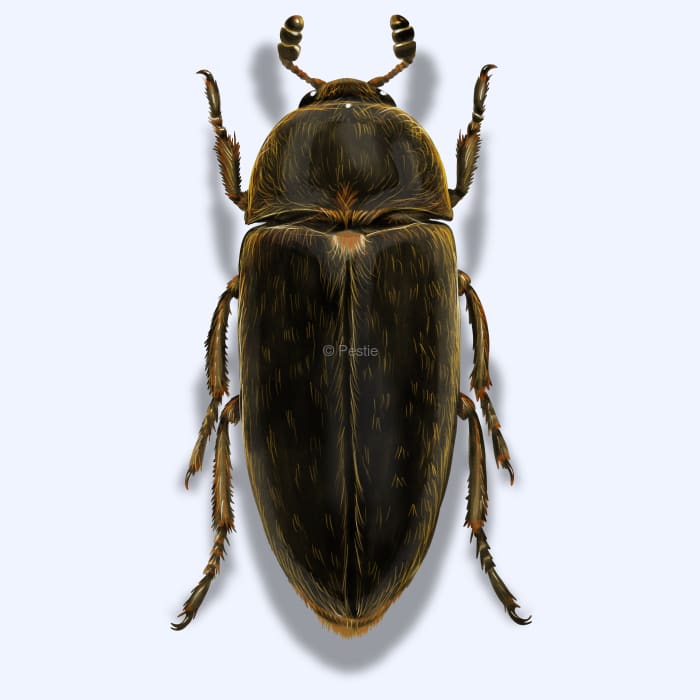How to identify and get rid of hide beetles

Hide and seek: finding and fighting hide beetles in your home
Hide beetles are the uninvited guests of the insect world that can turn up anywhere from your pantry to the garage. These beetles belong to the family of dermestid beetles, which are known for their knack for breaking down tough materials like leather, wool, and even carpet fibers. Hide beetles prefer areas where they can munch on animal products, and they’re not picky about cleanliness, making them a persistent problem if not tackled properly.
Hide beetles lay their eggs in dark, secluded spots where their larvae can feed undisturbed on materials high in protein, like dried meats, pet food, or even insect carcasses. As they grow, these beetles can cause significant damage to household items, making early detection and control essential.
How to identify hide beetles
Hide beetles are small insects that are best known for their oval body and the hairs all over their body. The adults have golden hairs on their backs and white hairs underneath. Additionally, they have clubbed antennae. The larvae have long, spiky hairs and have two short spikes on the end of their body.
In your home, you might notice damage to animal-based materials, such as holes in leather or woolen products, which are telltale signs of their presence. You might also find their larvae, which are hairy and tend to be found near their food sources. Sometimes they could be confused with the old house borer.
How big are hide beetles?
Hide beetles grow to be about 1/4 to 1/2 inch long.
Where do hide beetles live?
They are found throughout most of the US and are typically in kitchens, basements, garages, or wherever you store animal products.
How to get rid of hide beetles
Hide beetles are usually a surprise for most people, as these beetles will be hiding away in your storage areas. When you find them, it’s best to clean up the issue right away. You can get rid of them by handpicking them or vacuuming them up. Then do these preventative strategies to keep them from coming back:
- Sanitation: Regularly clean and vacuum areas where animal products are stored to remove food sources and potential breeding grounds.
- Storage: Store animal-based materials like wool, silk, or leather in airtight containers to prevent access by beetles.
- Temperature Control: Use cold or heat treatments for infested items, such as freezing small items for a week or heating them to at least 120°F for several hours.
- Remove Infested Items: Dispose of heavily infested items to prevent the spread of beetles to other areas.
- Seal up your home: Make sure to fill in any cracks or gaps around your home to prevent hide beetles from getting inside.
If you want to keep hide beetles from making their way into your home, consider using Pestie to establish an bug barrier around your property. You’ll get access to pro-grade solutions with the Pestie Smart Pest Plan that only take minutes to apply.
Treat hide beetles with Pestie
If you're still having trouble keeping hide beetles away, the best option is to use a pro-grade, effective pest control solution like Pestie.
Pestie is a do-it-yourself pest control solution that's specially designed to keep hide beetles and other pests away from your home.
With Pestie, you can rest easy knowing that your living space is protected and free of creepy crawlies. And the best part? It's designed for people, pets, and the planet, so you can say goodbye to harsh chemicals and hello to peace of mind!
- Save hundreds compared to traditional annual pest plans
- People, pet, and planet-friendly
- Pro-grade customized formulas
Quick facts
How dangerous are Hide Beetles?
Medium danger risk
While they aren’t directly harmful to humans, hide beetles can cause allergic reactions in some people and significant damage to household items.
- Scientific name
Dermestes Maculatus
- Colors
Dark brown
- Life span
2 months
- Diet
Animal products, leather, fur, silk, feathers, pet food
Hide beetles can be helpful in solving murder mysteries. The adults are often found on older dead bodies, and forensic scientists can determine how old the body is from the hide beetles.








